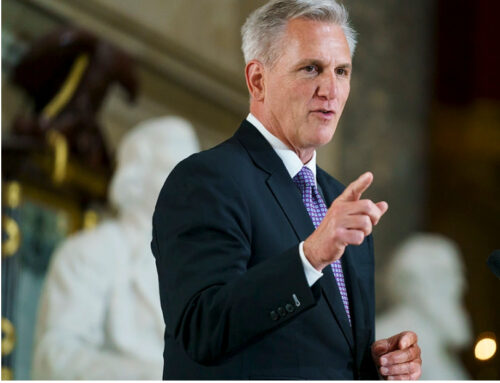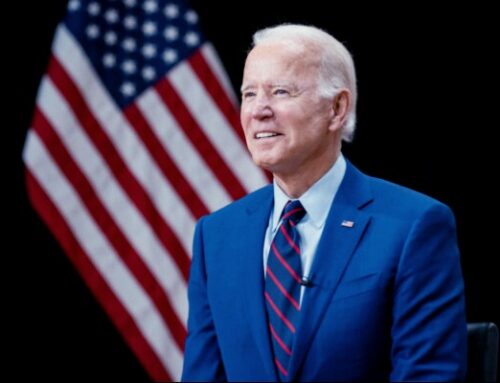For the first time in eight years, a new administration has assumed power in Washington. President Trump’s initiatives promise to have far ranging effects on taxes, health care, sector regulation, government spending, and the country’s fiscal situation.
This paper lays out the initiatives we expect Trump to pursue during his first year in office. We consider the extent to which Trump can expect support from the Republican-led Congress and the impediments that nonetheless may stand in the way. And, finally, we discuss how the new administration’s programs are likely to affect the economy, industry sectors, tax planning, investments, and the markets.
The paper provides an overview of the disparate policies the Trump administration will seek to enact. Future papers will delve more deeply into particular initiatives as we learn more details.
Implementation of Trump’s Policies
With Republicans in control of both the House and Senate, Trump should have little trouble getting much of his agenda through Congress. Moreover, because Barack Obama relied heavily on implementation by executive order, Trump can roll back many of Obama’s actions even without Congressional approval. But we note two checks on Trump’s plenary ability to implement his policies:
First, in the Senate sixty votes are required to overcome a filibuster and pass most legislation. The Republicans have a majority in the Senate, but not sixty votes. Nonetheless, Congress has adopted a procedure called “reconciliation”, which if followed permits the Senate to pass most spending and tax legislation with a simple majority. House Speaker Paul Ryan already has said he plans to use this procedure to pass much of Trump’s fiscal agenda, such as tax reform.
There also is the possibility that Republicans could eliminate the filibuster rule. Although the rule requires sixty votes for Senate action, the rule itself can be changed with only 51 votes. A few years ago when they were in control, the Democrats, frustrated with their inability to get Obama’s nominations through the Senate, eliminated the filibuster rule for federal appointments such as cabinet secretaries and for lower court judicial nominees (but not Supreme Court nominees). Thus the Senate now can approve those nominations with only 51 votes. The Republicans could reduce the filibuster threshold similarly for the passage of laws. We consider the implementation of this “nuclear option” unlikely, however. Most senators are traditionalists who know their party will be in the minority someday. They are reluctant to eliminate all minority perquisites.
Second, the deficit hawks in the House, of which Speaker Ryan is one, are wary of actions that will add significantly to the federal deficit. Trump is proposing additions to defense spending, substantial new spending on infrastructure, and deep tax cuts. These proposals could exacerbate a deficit already swollen from the adverse effects of an aging population on Social Security and Medicare spending — programs Trump says he is unwilling to change. House Republicans may push to reign in the scope of Trump’s spending proposals to lessen the adverse budgetary effects. The House leadership also tends to support free global markets, and so might take issue with Trump’s proposed trade restrictions.
Effects on Economic Sectors
Trump’s policies could affect the profitability and performance of companies in a number of economic sectors.
Obamacare (health care and pharmaceutical): Trump has promised to repeal the Affordable Care Act – a promise enthusiastically supported by virtually all Congressional Republicans. Complete repeal of the ACA is not feasible, however, as it would require sixty votes in the Senate. But the Republicans can use the reconciliation procedure to eviscerate the fiscal underpinnings of the Act, for instance by eliminating the penalty imposed on individuals who do not purchase insurance, the subsidy given to lower-income individuals who do purchase insurance, and the 3.8% surtax on investment income. Administratively, Trump can relax regulations that many businesses view as burdensome (for example, whittling down the list of medical conditions that employer-provided insurance must cover). Trump also could accede to the lawsuits challenging aspects of the law, further undermining its scope.
We expect Congress in fact will repeal the financial underpinnings underlying the ACA. But we also expect the repeal to have a deferred effective date, giving Republicans time to develop an alternative comprehensive health care reform plan. Although we don’t yet know the details of that alternative proposal, we expect it to include many of the following:
| • | Permit the purchase of insurance across state lines to increase competition. | ||||
| • | Provide a tax deduction for health insurance premiums paid. | ||||
| • | Enhance health savings accounts. | ||||
| • | Provide more price transparency for medical procedures and costs. | ||||
| • | Government negotiation of drug prices. | ||||
| • | Fund Medicaid through block grants to states, shifting to states the burden of future cost increases. | ||||
Trump also has expressed support for continuing the ACA provisions that require insurers to cover people with pre-existing health conditions under the same terms offered to healthy purchasers, and to allow children to remain on their parent’s insurance through age 26. Retaining these provisions without requiring healthy people also to buy insurance will be tricky.
Financial services: Trump’s cabinet appointments suggest that his policies toward the financial services sector will be more benign than those of the Obama administration. But Trump is not an unalloyed fan of Wall Street, as demonstrated by his populist campaign rhetoric frequently criticizing “crony capitalism”. We expect the thrust of Trump’s policies toward the financial sector to be positive, but there could be hiccups along the way.
Trump has suggested that he will seek to repeal Dodd-Frank legislation. As in the case of the ACA, the Senate filibuster rule will preclude full repeal of Dodd-Frank. And, unlike the ACA, Dodd-Frank has few financial underpinnings that Congress can eliminate through the reconciliation process.
But Trump can undermine Dodd-Frank and other corporate oversight through more lenient regulation and enforcement. He could water down the Volker Rule and other Dodd-Frank regulation. He also could instruct the SEC to reduce enforcement activities that many Republicans regard as counter-productive. The Consumer Financial Services Bureau – an entity that Republicans find particularly nettlesome – will remain, but its activities almost certainly will atrophy greatly under Trump’s administration.
Energy. Trump’s “America First” energy policy seeks to make the U.S. entirely energy independent. The policy relies on renewed exploitation of conventional energy sources such as oil, natural gas, coal, and shale. Trump does not view climate change concerns as an impediment to developing these traditional energy sources aggressively.
We expect Trump to repeal Obama’s environmental regulations limiting fracking; carbon emissions on power plants; and oil, gas, and coal extraction. We also expect him to reopen and promote drilling on federal lands and in offshore waters, as well as to reinstate stalled pipeline projects.
Fiscal Policies and Trade
Trade. Trade is the singular area where Trump’s initiatives conflict with the views of many Congressional Republicans. Trump’s “America First” policy seeks to protect domestic manufacturers and other domestic businesses in part by imposing tariffs on imported items. Trump also rejects the proposed Trans Pacific Partnership (which is now effectively dead) and wants to renegotiate NAFTA. If implemented, Trump’s actions likely would spur our trading partners to retaliate with tariffs and restrictions on U.S. exports. The result would be a decline in U.S. exports and higher consumer prices brought on by reduced foreign competition. Most economists believe Trump’s trade proposals would slow economic growth.
In contrast to Trump, Speaker Ryan and most others in the House leadership support free trade. They believe that the U.S. benefits from the free flow of goods, services, and capital around the world. For that reason, we expect Congress to push back against Trump’s trade proposals.
But Trump can implement some of his trade policies without Congressional approval. He has latitude to impose tariffs by executive action to counter currency manipulation, correct balance of payments trade deficits), protect domestic industries injured by imports, in cases of national emergency, or to protect national security. Trump has made clear that he views China as a currency manipulator, suggesting that trade sanctions against China could be appropriate.
On balance, we do not believe that Congress will enact the bulk of Trump’s trade restrictions. But his ability to act unilaterally remains a wild card that could negatively affect the economy and the markets.
Federal spending. Trump is proposing to increase substantially spending on the military and defense programs. He also is proposing a massive infrastructure repair program (he’s mentioned a $1 trillion figure) to fix the nation’s aging infrastructure while providing jobs.
We believe that the infrastructure program might be funded in part by a repatriation holiday, permitting multinational corporations to repatriate overseas earnings at a substantially reduced tax rate. The lower tax will encourage repatriations, reintroducing overseas funds into the U.S. economy while producing tax revenue for the federal government. But a repatriation holiday would cover only a portion of the infrastructure program cost, forcing (we believe) Congress to cut back on the proposed outlay.
In the first quarter, Congress also will have to address annual fiscal deadlines. Government funding runs out on April 28. Congress must appropriate funds before then to avoid a government shutdown. Moreover, the government’s authority to continue to borrow ends on March 17, after which Congress must raise the debt ceiling to avoid a default on U.S. debt outstanding. (If the government cannot borrow additional funds, it cannot pay interest on debt outstanding.) Fiscal hawks in the House are threatening to use these deadlines to force reductions in spending, a goal at odds with Trump’s desire to increase federal outlays and further raising the prospect of Congress curtailing the extent of his programs.
Taxes. Republican control of Congress and the White House makes tax reform a realistic possibility for the first time in thirty years. Reform legislation will act to reduce top tax rates and simplify the tax code’s overwhelming complexity.
In many respects, Trump’s tax plan follows the tax reform “blueprint” issued last July by the House Republicans. Trump’s plan calls for the following changes to individual taxes:
| • | 33% top individual rate. | ||||
| • | 20% top cap gain and dividend rate. | ||||
| • | Repeal Obamacare 3.8% surtax. | ||||
| • | Cap itemized deductions at $200K (couples). | ||||
| • | Eliminate the alternative minimum tax. | ||||
| • | Repeal the estate tax and generation skipping tax (but also repeal stepped up basis for joint estates exceeding $10 million). | ||||
| • | Tax life insurance build-up for high earners. (The House blueprint does not contain such a provision.) | ||||
For businesses, Trump’s plan calls for:
| • | 15% top tax rate on business income, including business income earned through pass-through entities. (The House plan calls for a 20% corporate tax and 25% on business pass-through income.) | ||||
| • | Full expensing of capital expenditures. | ||||
| • | Elimination of or limits on interest deductibility. | ||||
| • | Immediate taxation of foreign earnings (no deferral). (The House plan would exempt foreign earnings entirely from U.S. tax, even upon repatriation.) | ||||
| • | Tax sale of carried interest as ordinary income. | ||||
House deficit hawks insist that tax reform legislation must be revenue neutral, that is, revenue lost through the reduction in tax rates must be offset by eliminating or curtailing existing deductions and exemptions. To ease that process, Republicans have said they will implement “dynamic scoring”, which takes into account expected enhanced economic growth (and the accompanying tax revenue) resulting from lower tax rates.
Nonetheless, we expect Congress to consider curtailing deductions and exemptions to offset revenue lost by the lower tax rates. Trump’s proposals to limit itemized deductions and to tax insurance build-up are examples. Other changes likely will be “loophole closers”, less controversial tax changes to curtail what many members believe are unduly generous tax benefits. Examples of loophole closers could include:
| • | Curtail “stretching” of inherited IRAs and 401(k)s. | ||||
| • | Apply required minimum distribution rules to Roth IRA accounts beginning at age 70-1/2. | ||||
| • | Limit Roth IRA conversions to pre-tax dollars. | ||||
| • | Treat all distributions from S corps and partnerships to owner-employees as subject to employment taxes. | ||||
We believe the odds are high that Congress in 2017 will pass legislation reducing tax rates. The effective date is uncertain, but there is a strong likelihood that lower tax rates would apply retroactively to the beginning of 2017. Tax rates in 2017 could incorporate the full rate reduction, or a reduction somewhere between the old and new rates.
Tax reform will not benefit everyone, however; there will be winners and losers. Elimination of deductions and exemptions will fall unevenly across economic sectors, businesses, and individual taxpayers. Investors should keep a close eye as reform legislation progresses to determine which sectors could lose tax benefits in the name of overall lower rates.
Deficit effects. Over the past several years, the federal deficit has declined steadily from its all-time high in 2009. But, according to the nonpartisan Congressional Budget Office, the deficit is now rising again. Congressional Budget Office, Long Term Budget Outlook (August 2016). Even in the absence of additional spending or tax changes, this deficit increase will accelerate in coming years as major entitlement expenditures (Social Security and Medicare payments) grow with the aging population.
An effective way to reign in the deficit is to curtail mandatory spending, primarily Social Security, Medicare, and Medicaid spending. Trump has stated, however, that he will not reduce Social Security or Medicare benefits even for young workers (another position that puts him at odds with House Republicans).
Trump’s additional military spending and large-scale infrastructure repair program threaten to exacerbate an already ballooning deficit, requiring significantly greater borrowing in later years. The initial budget passed by the House Republicans in January 2017 would increase the deficit to over $1 trillion by the end of the decade, and would increase total U.S. debt outstanding by almost $10 trillion (to $29 trillion) by 2026. These figures are contained in the budget resolution itself. Washington Post (January 5, 2017).
Economic and Market Consequences
Near term. The markets reacted favorably post-election, anticipating the stimulative effects of Trump’s plans for spending more and taxing less. Indeed, the combination of fiscal stimulus, corporate tax reform, and reduced federal regulation should boost near-term economic growth. Implementation of these policies also should benefit the markets in the near term.
We note four items that could retard this favorable near-term outlook:
| • | Congressional curtailment of spending on Trump’s proposed programs could undercut market expectations. The market run-up in the wake of the election likely reflects an assumption that Trump will be able to implement his policies. Congressional cutbacks of those policies (such as a reduction in infrastructure spending) could disappoint the markets. | ||||
| • | Trade restrictions could undermine economic growth. | ||||
| • | Renewed inflation due to economic overheating could lead to higher interest rates. | ||||
| • | Trump’s unpredictability has the potential to roil the markets. | ||||
Regarding this final bullet, Trump has shown a willingness to take on causes and businesses that he feels are not acting for the good of the country. Even his offhand comments can have detrimental effects on market expectations. Before his inauguration, Trump criticized Boeing for the cost of new government airplane purchases, causing that company’s stock to drop. His offhand comment to a reporter about drug prices hurt pharmaceutical stocks. During the campaign, Trump ruminated that perhaps the country could improve its fiscal standing by repaying Treasury debt at a discount (a comment he walked back afterward). This penchant for unpredictability could roil businesses, economic sectors, or the markets as a whole, undermining the optimism generated by his pro-growth policies.
Longer term. Although markets initially will cheer higher spending and lower taxes, the negative consequences to the federal deficit could cause overleveraging problems down the road. Over-borrowing could force Congress later to take steps to reduce federal spending or raise taxes, both of which would have negative economic effects. The need to sell trillions of dollars of new debt every year also could lead borrowers to demand higher interest rates, not unlike the situation we saw in Europe. Thus, a Trump presidency conceivably could follow the arc of the George W. Bush presidency: a favorable economic jolt followed by exploding debt leading to an economic (and market) downturn.
Industries to Watch
The following industries could benefit from the Trump administration policies:
| • | Domestic industrials (infrastructure spending, immediate expensing of capital purchases) | ||||
| • | Traditional energy (oil, gas, coal, shale, pipelines) | ||||
| • | Defense (defense spending, immediate expensing of capital purchases) | ||||
| • | Financial services (less regulation, higher interest rates) | ||||
| • | Consumer discretionary (lower tax rate) | ||||
The effects on these industries appear mixed:
| • | Pharmaceutical / health care / health insurers | ||||
| – | Pull back on initiatives to regulate drug prices (+) | ||||
| – | Faster FDA approval (+) | ||||
| – | Government negotiation of drug prices (-) | ||||
| – | Reduced availability of ACA insurance (-) | ||||
| • | Technology | ||||
| – | No benefit from lower tax rate (effective tax rates already are low) | ||||
| – | Tariff effect on supply chain | ||||
A Final Word on Taxes
Lower tax rates won’t last forever. Congressional procedural rules are likely to require that the lower rates “sunset” in ten years (as did the Bush tax cuts, leading to the “fiscal cliff” in 2012). Before then, a Democratic Congress – or any Congress concerned about outsized deficits in future years – could raise tax rates again.
Investors must plan for this “tax volatility” – the concept that over time tax rates ebb and flow. Investors should maintain liquidity in both taxable and tax-deferred accounts and in taxable and tax-free investments. That way they can withdraw funds from one or the other depending on whether it makes sense to pay taxes that year (and if so whether to pay at ordinary income or capital gains rates). Preparing for tax volatility allows an investor to take advantage of tax changes, whichever way they might go.
Andrew H. Friedman is the principal of The Washington Update LLC and a former senior partner in a Washington, D.C. law firm. He and his colleague Jeff Bush speak regularly on legislative and regulatory developments and trends affecting investment, insurance, and retirement products. They may be reached at www.TheWashingtonUpdate.com.
The authors of this paper are not providing legal or tax advice as to the matters discussed herein. The discussion herein is general in nature and is provided for informational purposes only. There is no guarantee as to its accuracy or completeness. It is not intended as legal or tax advice and individuals may not rely upon it (including for purposes of avoiding tax penalties imposed by the IRS or state and local tax authorities). Individuals should consult their own legal and tax counsel as to matters discussed herein and before entering into any estate planning, trust, investment, retirement, or insurance arrangement. Copyright Andrew H. Friedman 2017. Reprinted by permission. All rights reserved.













